Initial Design Ideas
While brainstorming ideas for what I would make a bagatelle game about, I focused on the aspect of freely moving down a slope and came upon the idea of downhill skiing. Although I’m not a skier myself, I’ve always thought that it looks fun and I want to try it one day. I thought that downhill skiing would be a perfect theme for a bagatelle game since both skiers and the ball go from the top of a slope and head toward the bottom of it.

I wanted my bagatelle game to look just like a piste. In order to accomplish this, I centered the features of my game around what one might actually find at one. The main features that I planned are as follows:
- The ball which represents the skier themself
- Pins scattered throughout the board that represent trees
- Pockets that represent runouts
- A ramp
- An area only accessible via the ramp that represents a landing zone
In the initial plan for my bagatelle game, the rules allowed for a player to shoot 8 balls, one at a time. The way to score points was to land the ball into any of the unoccupied pockets, which would yield its labelled point value. The most rewarding pocket was blocked off, so the only way to score from it was to get the ball to catch air over the ramp so that it could land inside of it. Each pocket could only have one ball in it at a time, and if they were all full before each ball was used by the player, then each unused ball would automatically be converted to an additional 200 points for the player. If the player were to completely miss all of the pockets with a ball, then it would yield no reward and did not grant an additional attempt.
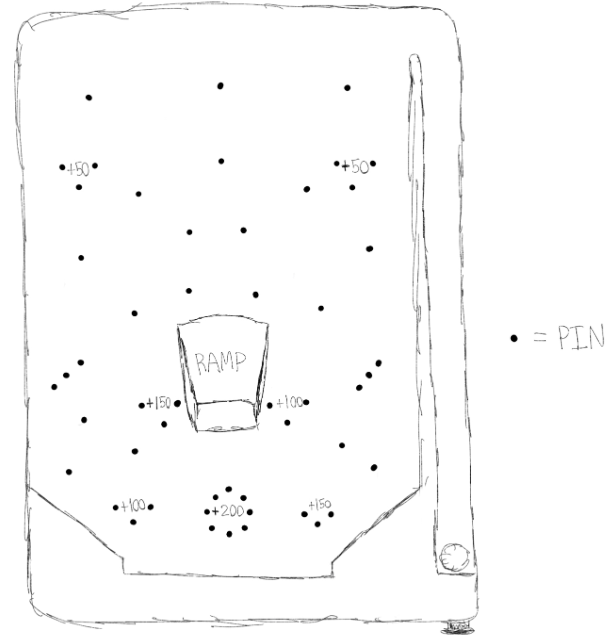
Initial Design
As I actually started building Skitelle, I noticed that I was going to have to change a few aspects of it.
Prior to starting construction, I realized that the way that I had laid out the pins would end up making it incredibly hard to score. As a result, I decided to shift some around and remove others. I also decided to make the layout of the pins symmetrical for the sake of consistency.
Additionally, I made the choice to make the pockets out of cardboard walls instead of pins, since using the pins that represented trees for scoring zones made it look like the “skier” was being rewarded for crashing into a group of trees. I also realized that getting into the most valuable pocket with the ramp would be virtually impossible this way, so I decided to replace this pocket with a “TRICK LANDING” zone. This zone encompassed much more area than the original pocket, and now also utilized cardboard walls instead of pins. Still only accessible via the ramp, the new “TRICK LANDING” zone was designed to offer much more forgiveness for players who were aiming to make a “trick landing”.
Another change that I made was straightening out the base and top of the ramp and giving it a consistent width entirely. I made this choice because I did not have the skills or materials necessary to warp cardboard into such a precise shape.
Finally, I also chose to change up a few of the rules a bit. Instead of giving the player 8 balls, I decided that players would play in “sessions” instead, where they chose how many balls they got to shoot, at the price of 10 cents per ball. The other rule that I changed was that I removed the score zone exclusivity limit for the “TRICK LANDING” zone. By doing this, I ensured that Skitelle no longer had a limit to what the highest score possible was.
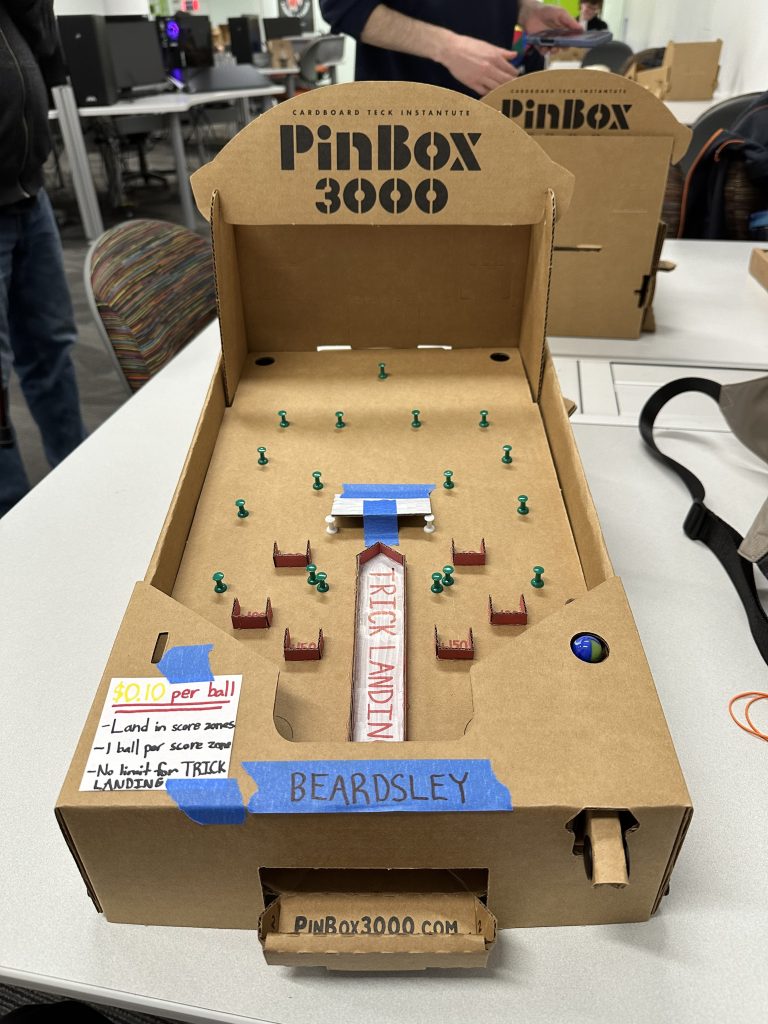
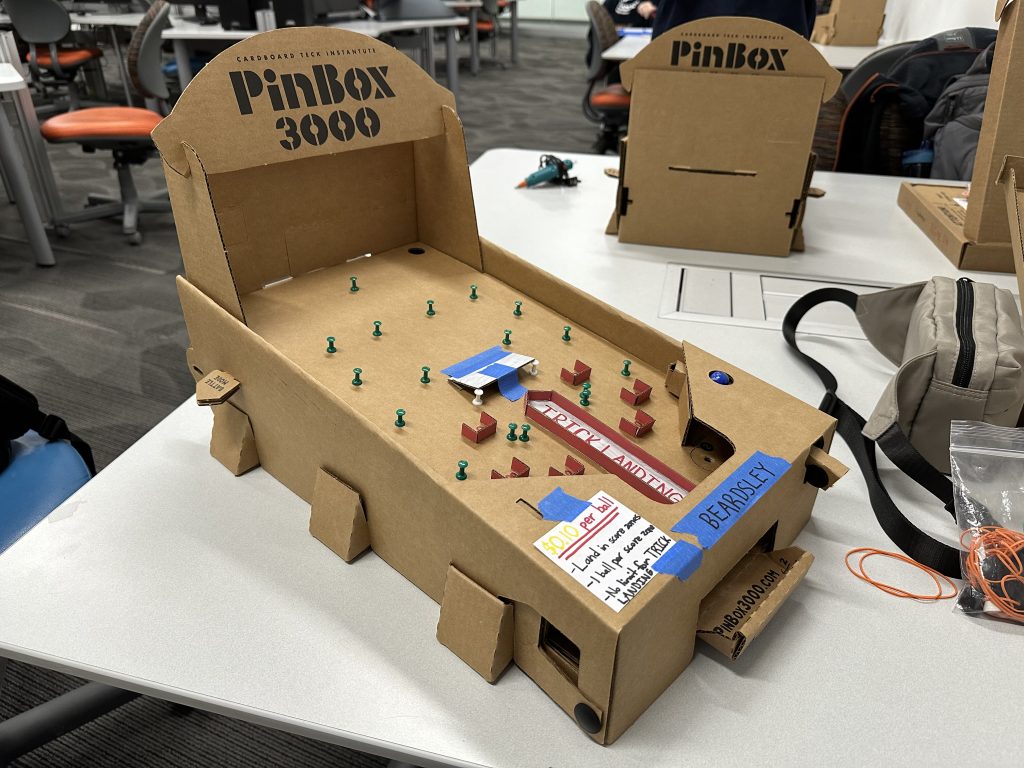
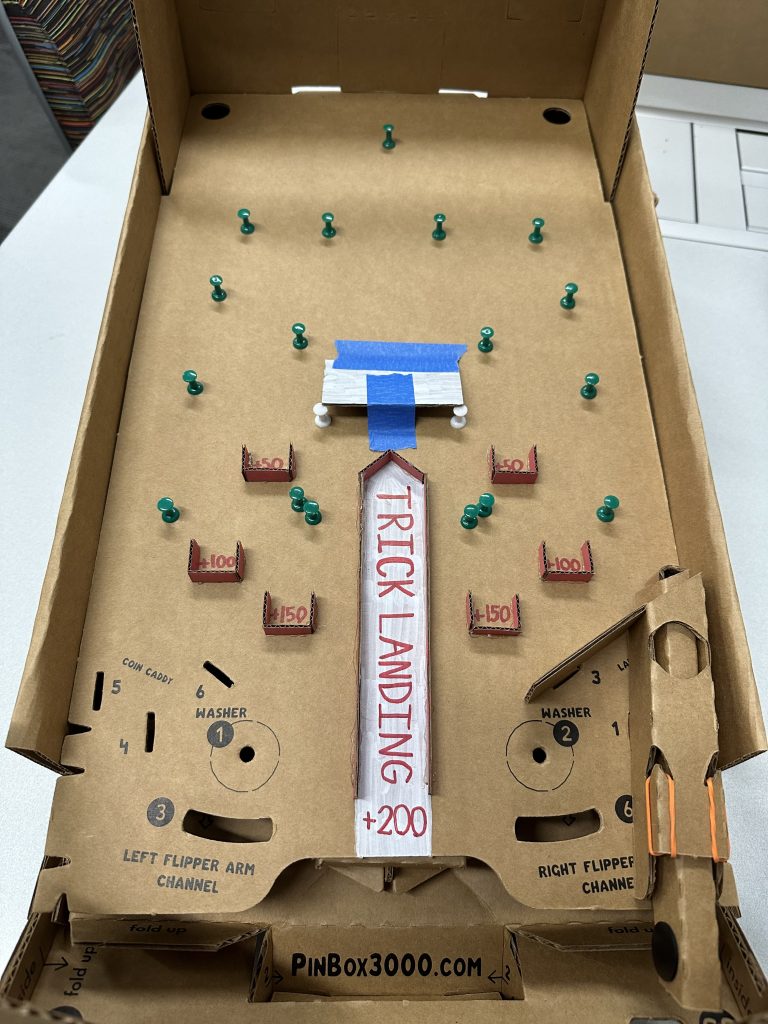
Playtest Results
After some playtesting on the behalf of others in my class, I learned that majority of the playtesters liked the theme that I’d picked out for the game, and that they also thought the rules were conveyed to them clearly.
I also learned, however, that there were quite a few flaws that I needed to work on. The general consensus about this version of Skitelle was that it was too hard, for a variety of reasons. Players had difficulty scoring because of the small size of the pockets, and the ramp was not at a feasible angle to make a “trick landing” possible. Players also noted that it was very difficult to aim the ball because there were no guide walls at the top of the machine or by the launcher.
Final Design
As a result of playtesting and trying Skitelle myself, I made even more changes to accommodate for the issues that were discovered.
I firstly added a guide wall that ran parallel to the side walls of the machine so that balls would go straight after being launched. In addition to this wall, I added another one at a slant by the top right corner of the machine to direct launched balls to the left. I decided to add these walls to the machine to make the aiming experience much more consistent for players.
To tackle the “TRICK LANDING” issue, I made two modifications. The first change that I made was that I lowered the angle that the ramp stood at. I decided to do this because the harsh angle that it stood at before was part of the reason as to why making a “trick landing” was impossible. After lowering the intensity of the ramp’s angle, the ball was now able to actually roll over it, but it still could not catch air. Because it couldn’t catch air, I made the second change: extending the walls of the “TRICK LANDING” zone to the edge of the ramp. This change made it so that the ball only had to roll over the ramp, in the right spot, to make a “trick landing”. With this, there was no way for making a “trick landing” to be impossible anymore.
I also once again changed up the rules for the final version of Skitelle. I reverted the change to how to obtain balls and made the starting ball count 8 balls again. Additionally, I made it so that if a “trick landing” was made, the player would be granted an additional 2 balls on top of the points that they earned. I did this because I think that the monetization on the balls was too harsh in the previous ruleset, and it promoted paying to get high scores. Although playtesters did not have to pay to play, I could imagine that it would’ve been a frustrating system to deal with for them regardless. I also decided to make “trick landings” more rewarding because despite the changes I made to the ramp and zone, they were still difficult to perform. By granting an additional 2 balls for making a “trick landing”, I was able to maintain the lack of a highest score possible while also being able to reward players with an opportunity to play for longer.
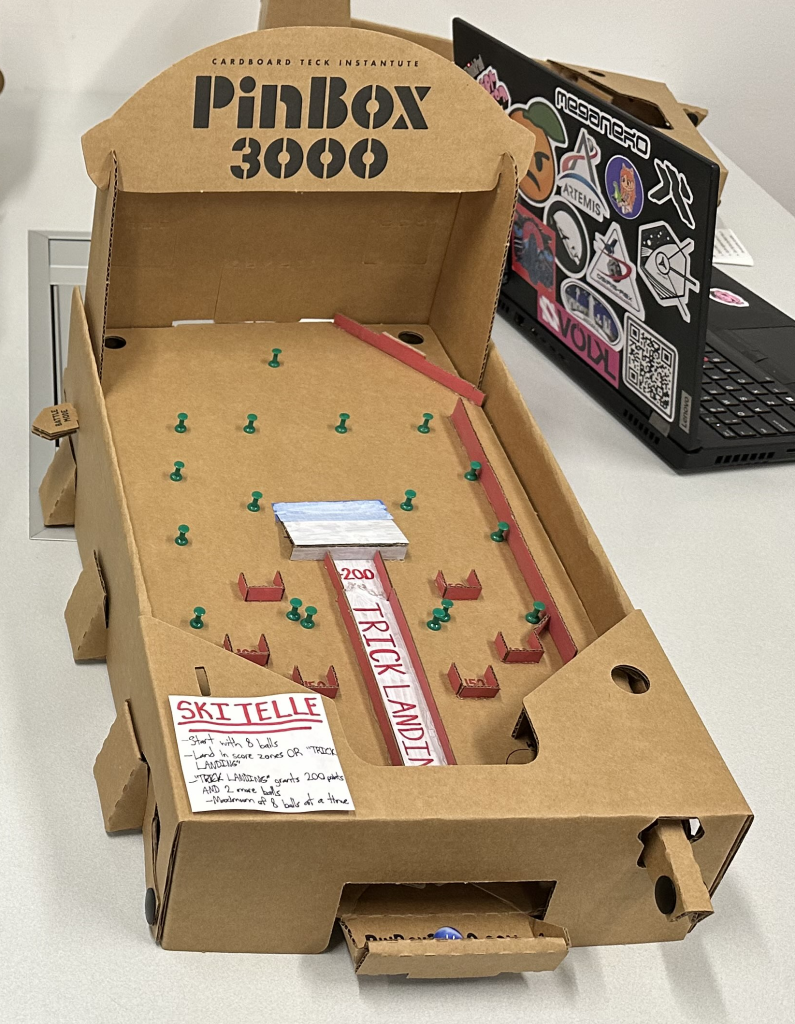
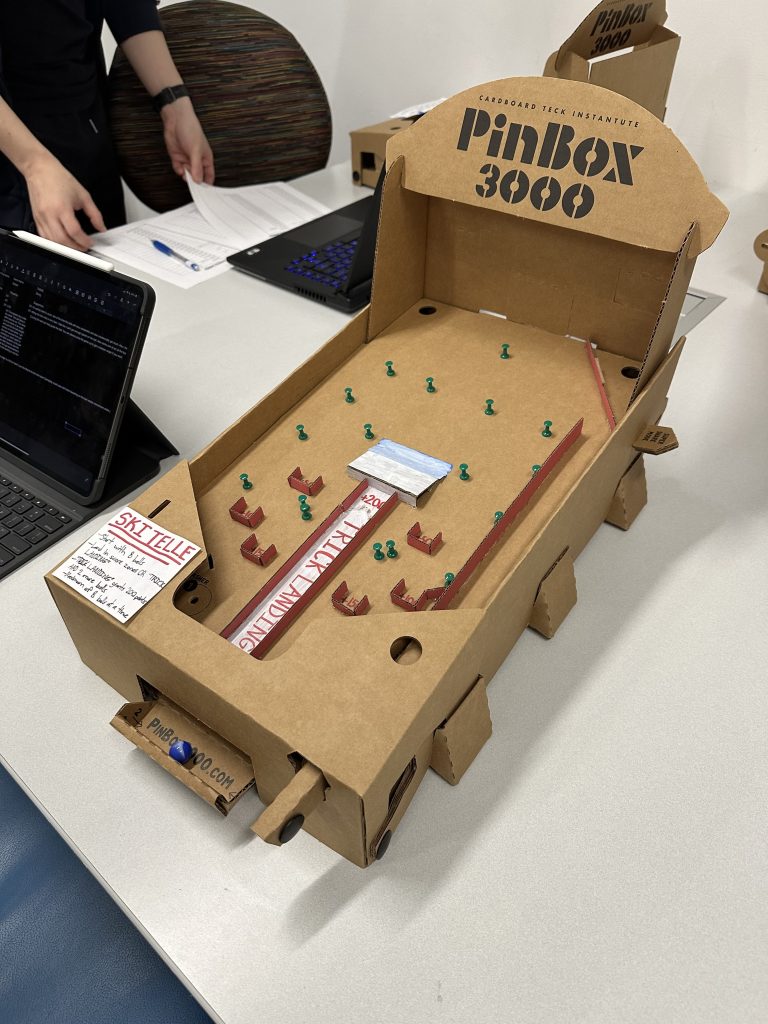

Final Thoughts
After doing some playtesting with the final version of Skitelle, I came to find that players generally appreciated the improvements. There were certainly still issues with the game, such as the small score pockets, but players were excited to be able to make trick landings, and, although it was still difficult, the game felt a lot more balanced than it did before.
My experience making my own bagatelle game has been quite the journey, and I learned a lot about it along the way. I had a great time designing and building Skitelle, and I’m glad to say that I am proud of what I created!
